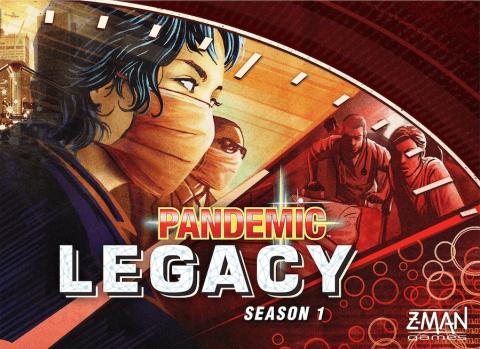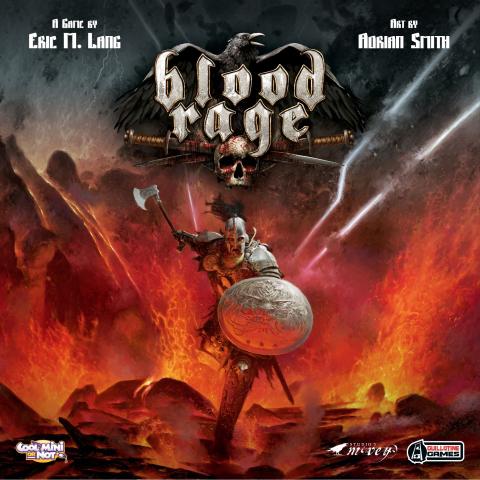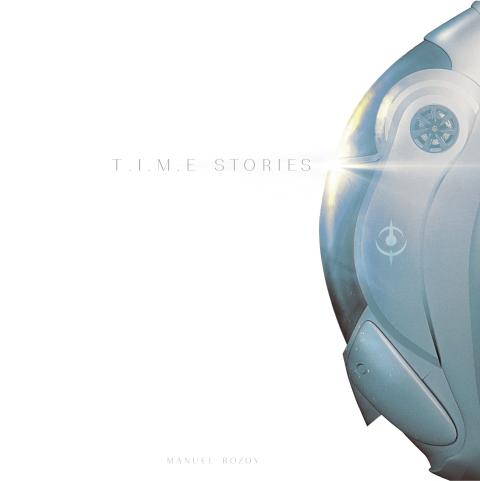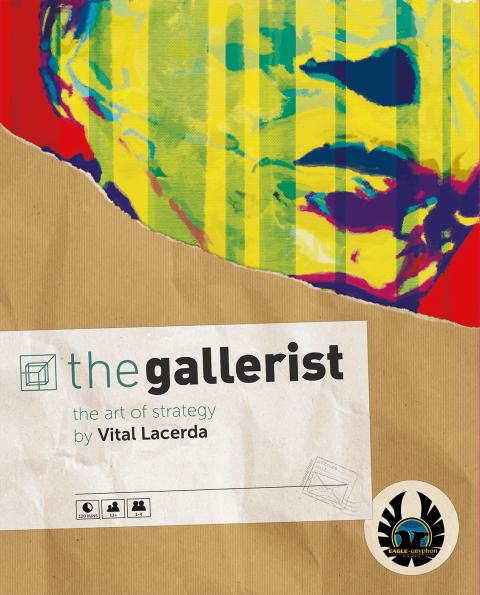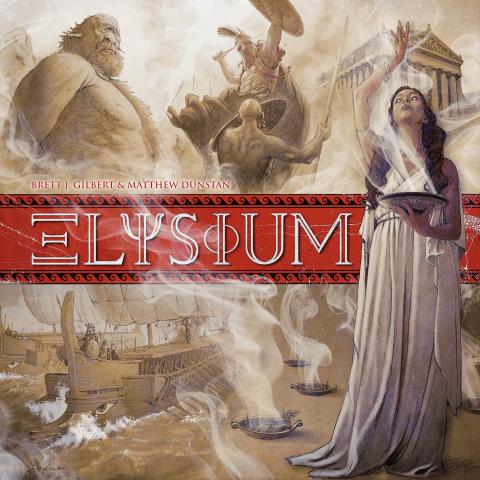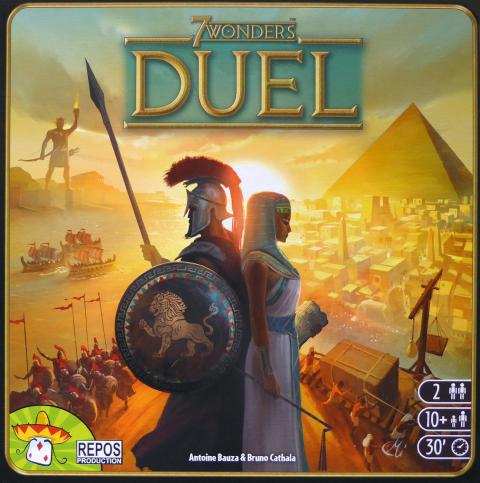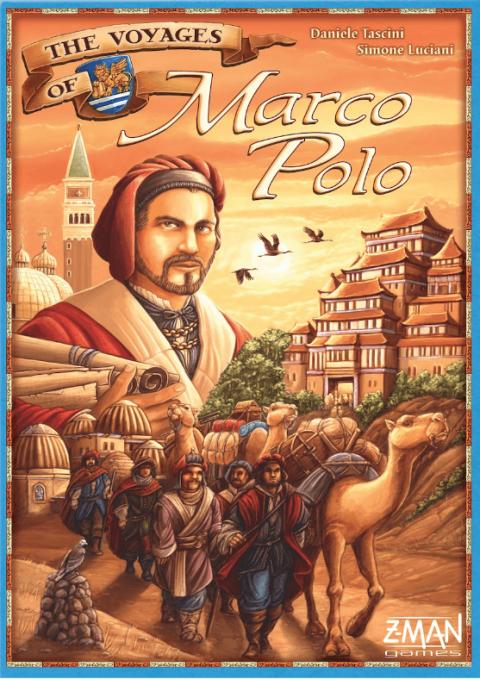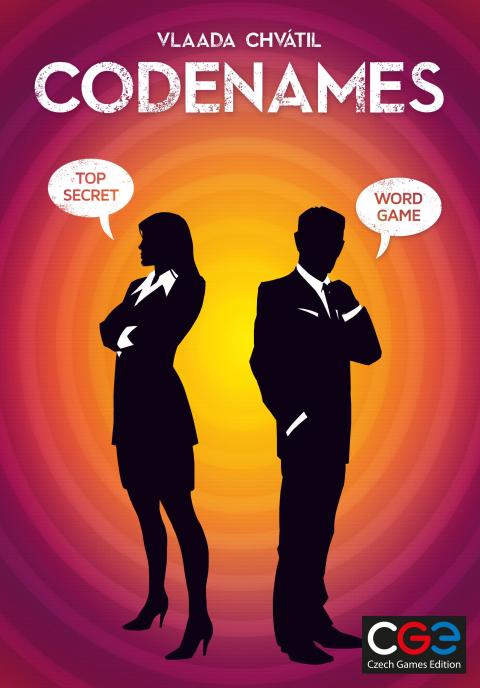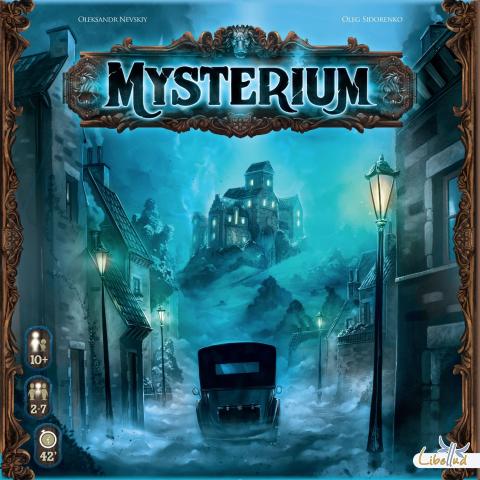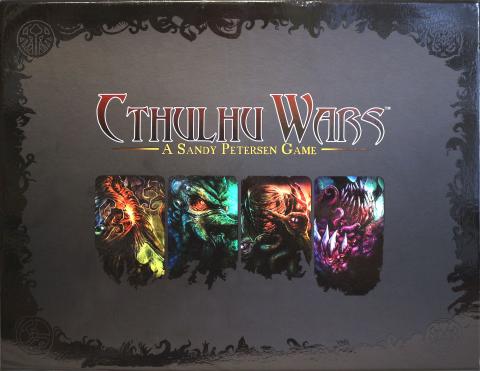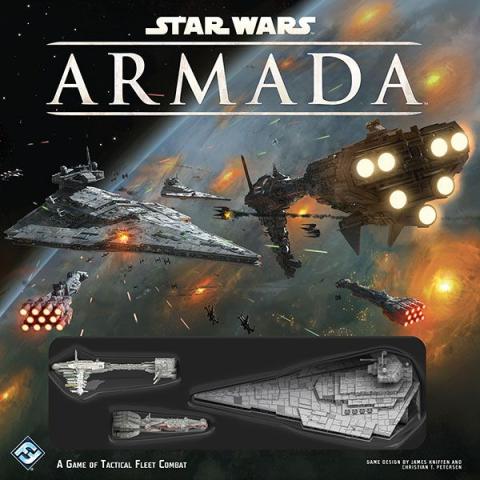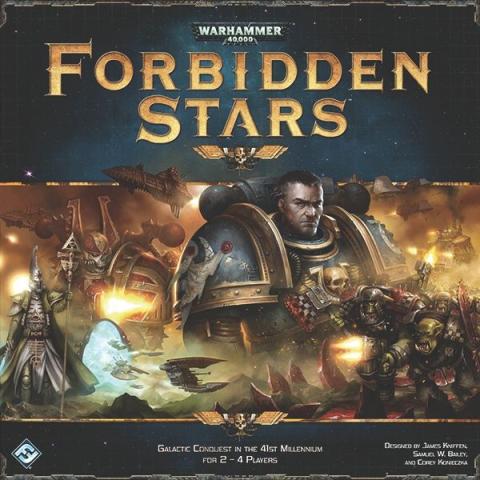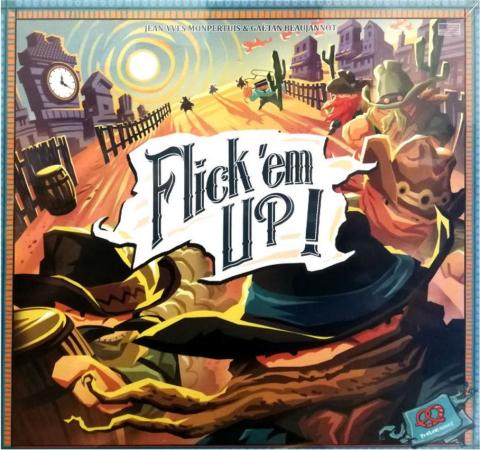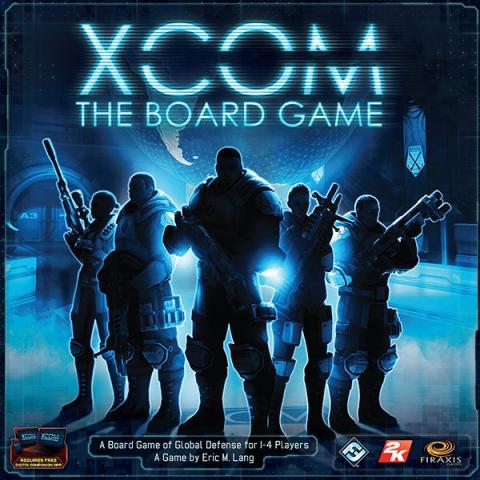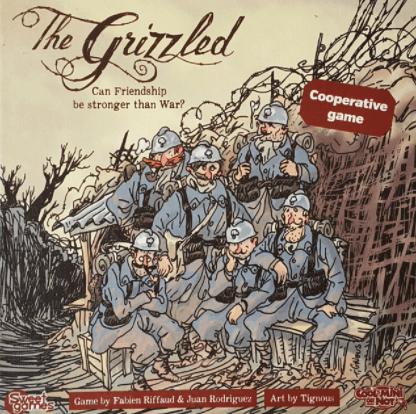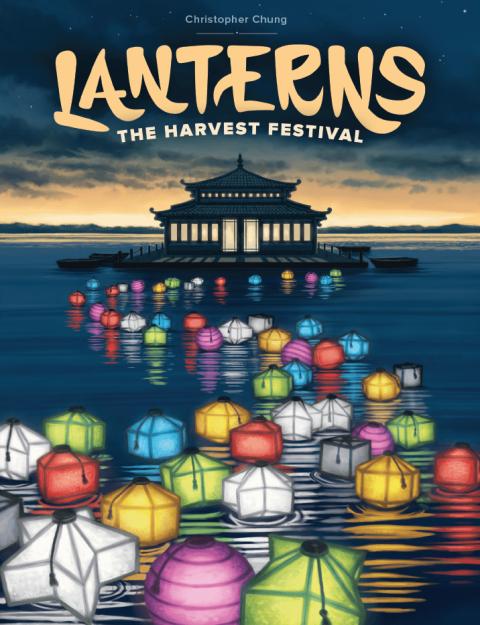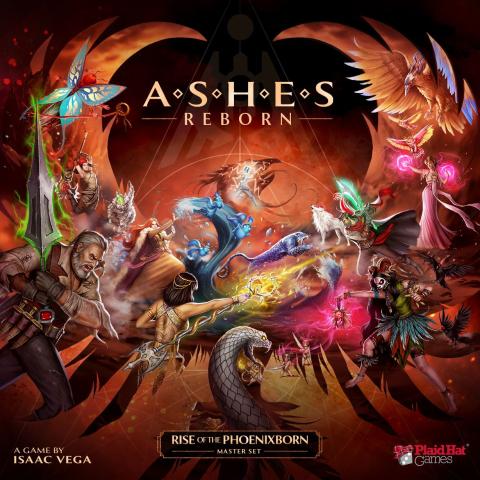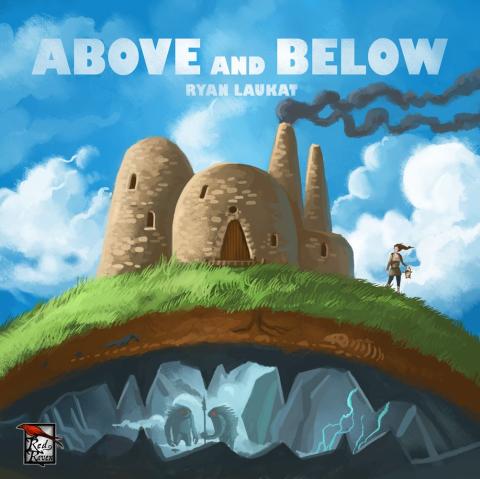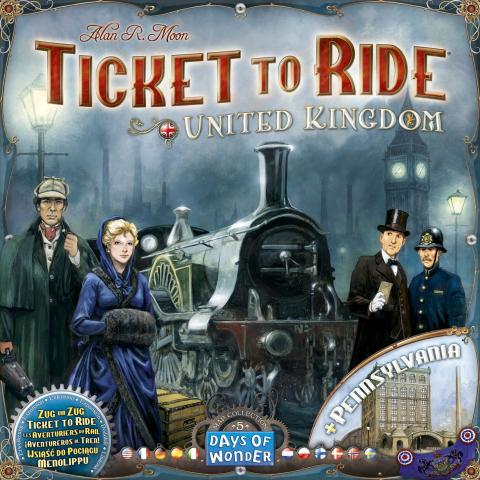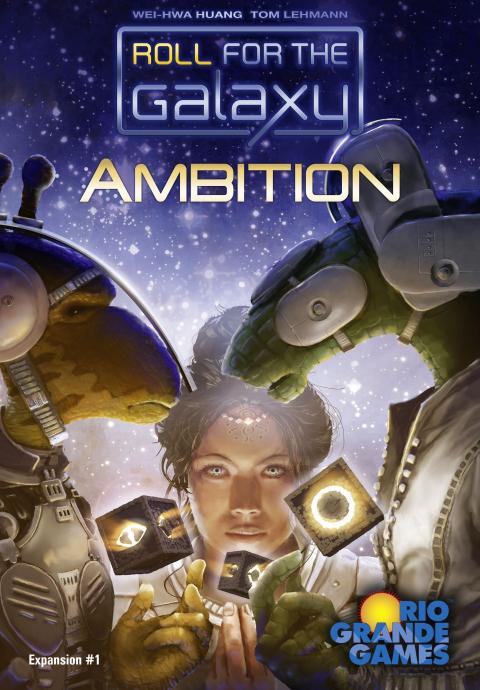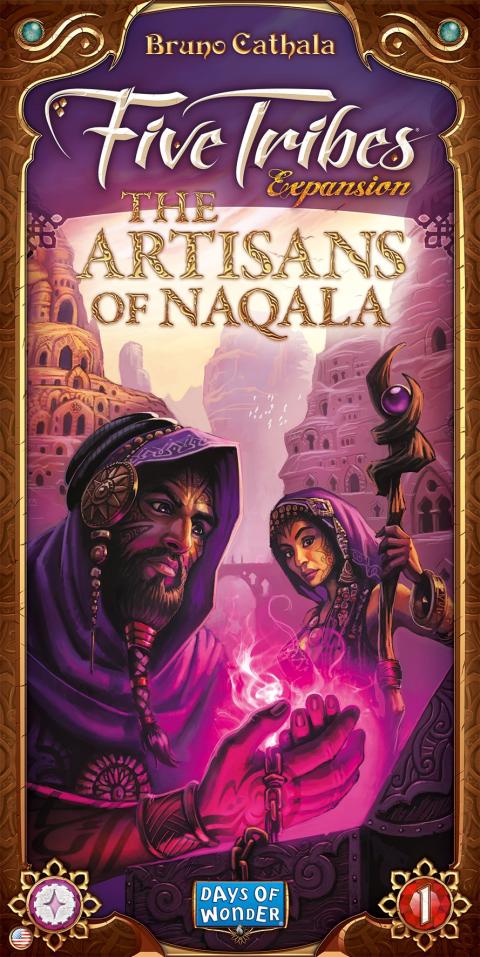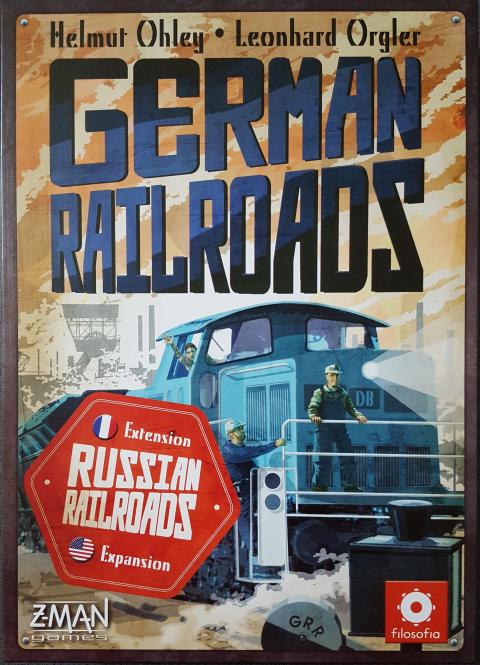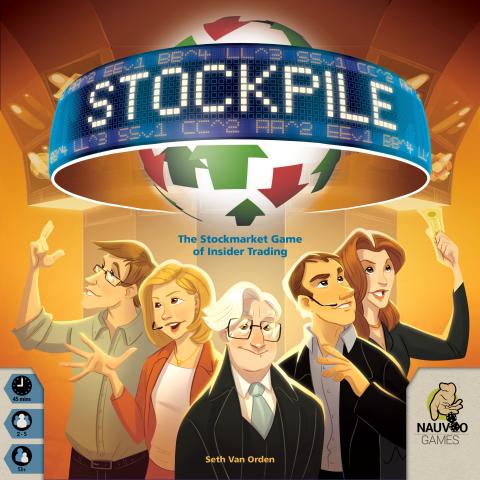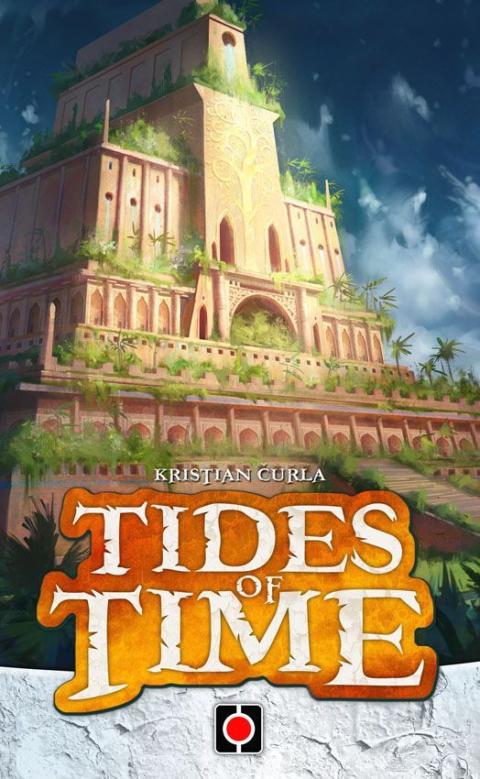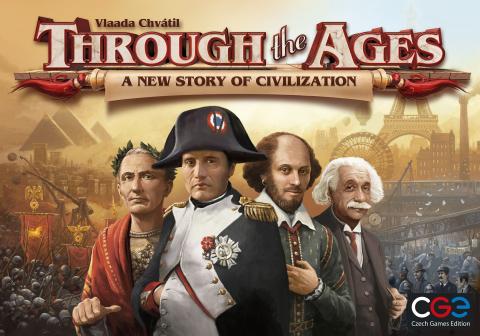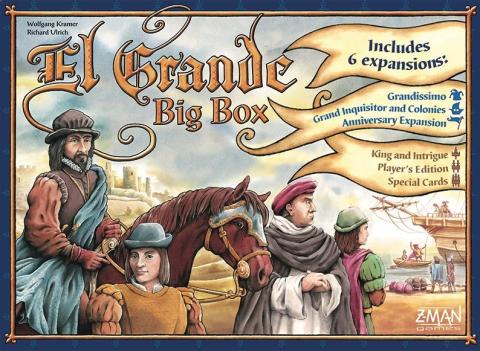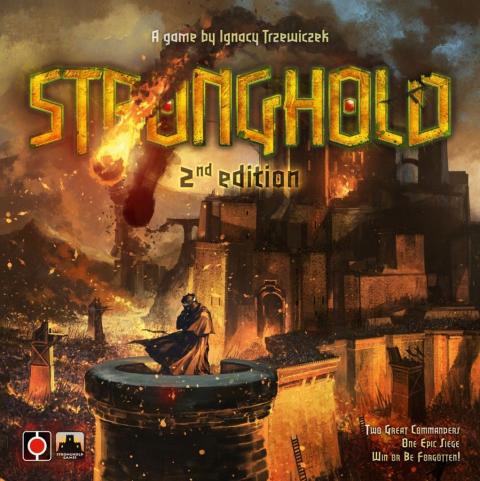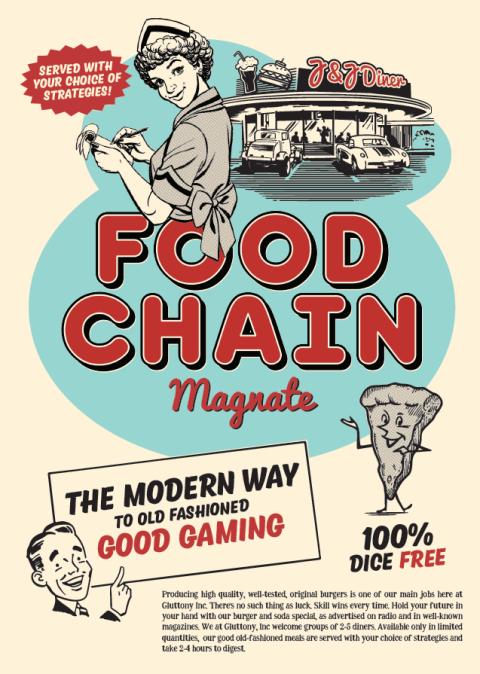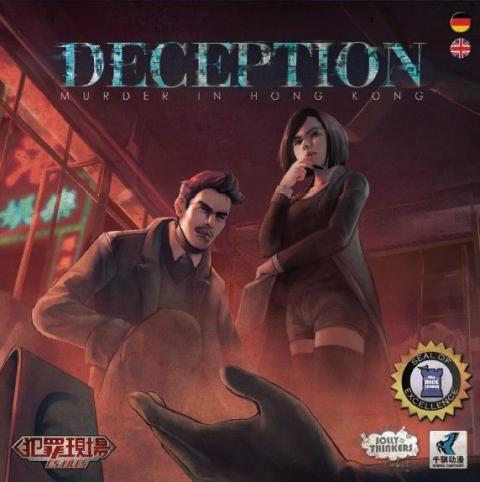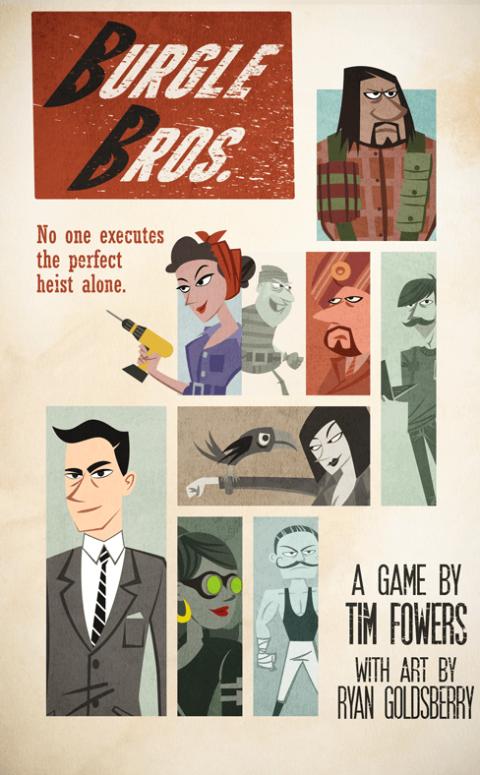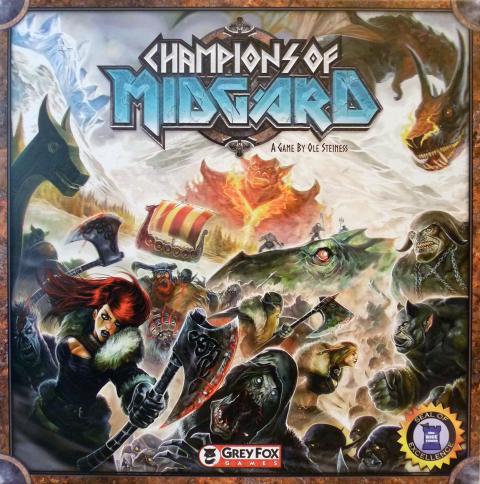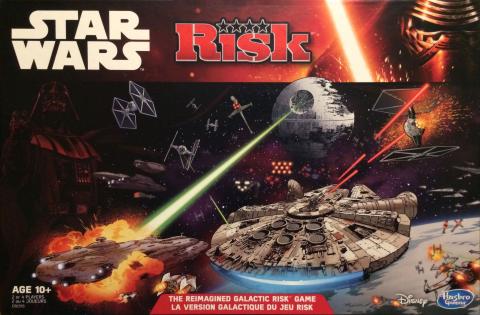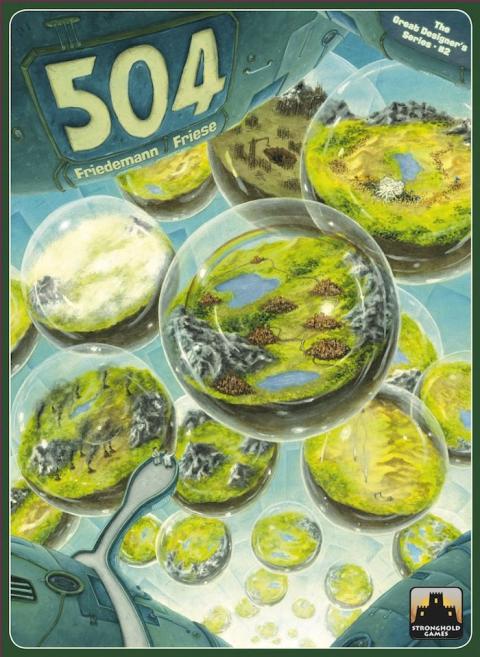Presenting the nominees of the ninth annual Dice Tower Awards for games released in 2015 in categories including artwork, small publisher, new designer, and the game of the year!
Game of the Year

Pandemic Legacy is a co-operative campaign game, with an overarching story-arc played through 12-24 sessions, depending on how well your group does at the game. At the beginning, the game starts very similar to basic Pandemic, in which your team of disease-fighting specialists races against the clock to travel around the world, treating disease hotspots while researching cures for each of four plagues before they get out of hand.
During a player's turn, they have four actions available, with which they may travel around in the world in various ways (sometimes needing to discard a card), build structures like research stations, treat diseases (removing one cube from the board; if all cubes of a color have been removed, the disease has been eradicated), trade cards with other players, or find a cure for a disease (requiring five cards of the same color to be discarded while at a research station). Each player has a unique role with special abilities to help them at these actions.
After a player has taken their actions, they draw two cards. These cards can include epidemic cards, which will place new disease cubes on the board, and can lead to an outbreak, spreading disease cubes even further. Outbreaks additionally increase the panic level of a city, making that city more expensive to travel to.
Each month in the game, you have two chances to achieve that month's objectives. If you succeed, you win and immediately move on to the next month. If you fail, you have a second chance, with more funding for beneficial event cards.
During the campaign, new rules and components will be introduced. These will sometimes require you to permanently alter the components of the game; this includes writing on cards, ripping up cards, and placing permanent stickers on components. Your characters can gain new skills, or detrimental effects. A character can even be lost entirely, at which point it's no longer available for play.
Part of the Pandemic series
During a player's turn, they have four actions available, with which they may travel around in the world in various ways (sometimes needing to discard a card), build structures like research stations, treat diseases (removing one cube from the board; if all cubes of a color have been removed, the disease has been eradicated), trade cards with other players, or find a cure for a disease (requiring five cards of the same color to be discarded while at a research station). Each player has a unique role with special abilities to help them at these actions.
After a player has taken their actions, they draw two cards. These cards can include epidemic cards, which will place new disease cubes on the board, and can lead to an outbreak, spreading disease cubes even further. Outbreaks additionally increase the panic level of a city, making that city more expensive to travel to.
Each month in the game, you have two chances to achieve that month's objectives. If you succeed, you win and immediately move on to the next month. If you fail, you have a second chance, with more funding for beneficial event cards.
During the campaign, new rules and components will be introduced. These will sometimes require you to permanently alter the components of the game; this includes writing on cards, ripping up cards, and placing permanent stickers on components. Your characters can gain new skills, or detrimental effects. A character can even be lost entirely, at which point it's no longer available for play.
Part of the Pandemic series
Year Published:
2015
Designers:
Rob Daviau
Publishers:
Z-Man Games

Best Board Game Components

"Life is Battle; Battle is Glory; Glory is ALL"
In Blood Rage, each player controls their own Viking clan’s warriors, leader, and ship. Ragnarök has come, and it’s the end of the world! It’s the Vikings’ last chance to go down in a blaze of glory and secure their place in Valhalla at Odin’s side! For a Viking there are many pathways to glory. You can invade and pillage the land for its rewards, crush your opponents in epic battles, fulfill quests, increase your clan's stats, or even die gloriously either in battle or from Ragnarök, the ultimate inescapable doom.
Most player strategies are guided by the cards drafted at the beginning of each of the three game rounds (or Ages). These “Gods’ Gifts” grant you numerous boons for your clan including: increased Viking strength and devious battle strategies, upgrades to your clan, or even the aid of legendary creatures from Norse mythology. They may also include various quests, from dominating specific provinces, to having lots of your Vikings sent to Valhalla. Most of these cards are aligned with one of the Norse gods, hinting at the kind of strategy they support. For example, Thor gives more glory for victory in battle, Heimdall grants you foresight and surprises, Tyr strengthens you in battle, while the trickster Loki actually rewards you for losing battles, or punishes the winner.
Players must choose their strategies carefully during the draft phase, but also be ready to adapt and react to their opponents’ strategies as the action phase unfolds. Battles are decided not only by the strength of the figures involved, but also by cards played in secret. By observing your opponent’s actions and allegiances to specific gods, you may predict what card they are likely to play, and plan accordingly. Winning battles is not always the best course of action, as the right card can get you even more rewards by being crushed. The only losing strategy in Blood Rage is to shy away from battle and a glorious death!
In Blood Rage, each player controls their own Viking clan’s warriors, leader, and ship. Ragnarök has come, and it’s the end of the world! It’s the Vikings’ last chance to go down in a blaze of glory and secure their place in Valhalla at Odin’s side! For a Viking there are many pathways to glory. You can invade and pillage the land for its rewards, crush your opponents in epic battles, fulfill quests, increase your clan's stats, or even die gloriously either in battle or from Ragnarök, the ultimate inescapable doom.
Most player strategies are guided by the cards drafted at the beginning of each of the three game rounds (or Ages). These “Gods’ Gifts” grant you numerous boons for your clan including: increased Viking strength and devious battle strategies, upgrades to your clan, or even the aid of legendary creatures from Norse mythology. They may also include various quests, from dominating specific provinces, to having lots of your Vikings sent to Valhalla. Most of these cards are aligned with one of the Norse gods, hinting at the kind of strategy they support. For example, Thor gives more glory for victory in battle, Heimdall grants you foresight and surprises, Tyr strengthens you in battle, while the trickster Loki actually rewards you for losing battles, or punishes the winner.
Players must choose their strategies carefully during the draft phase, but also be ready to adapt and react to their opponents’ strategies as the action phase unfolds. Battles are decided not only by the strength of the figures involved, but also by cards played in secret. By observing your opponent’s actions and allegiances to specific gods, you may predict what card they are likely to play, and plan accordingly. Winning battles is not always the best course of action, as the right card can get you even more rewards by being crushed. The only losing strategy in Blood Rage is to shy away from battle and a glorious death!
Year Published:
2015
Designers:
Eric M. Lang
Publishers:
Cool Mini Or Not

Best Co-op Game

Pandemic Legacy is a co-operative campaign game, with an overarching story-arc played through 12-24 sessions, depending on how well your group does at the game. At the beginning, the game starts very similar to basic Pandemic, in which your team of disease-fighting specialists races against the clock to travel around the world, treating disease hotspots while researching cures for each of four plagues before they get out of hand.
During a player's turn, they have four actions available, with which they may travel around in the world in various ways (sometimes needing to discard a card), build structures like research stations, treat diseases (removing one cube from the board; if all cubes of a color have been removed, the disease has been eradicated), trade cards with other players, or find a cure for a disease (requiring five cards of the same color to be discarded while at a research station). Each player has a unique role with special abilities to help them at these actions.
After a player has taken their actions, they draw two cards. These cards can include epidemic cards, which will place new disease cubes on the board, and can lead to an outbreak, spreading disease cubes even further. Outbreaks additionally increase the panic level of a city, making that city more expensive to travel to.
Each month in the game, you have two chances to achieve that month's objectives. If you succeed, you win and immediately move on to the next month. If you fail, you have a second chance, with more funding for beneficial event cards.
During the campaign, new rules and components will be introduced. These will sometimes require you to permanently alter the components of the game; this includes writing on cards, ripping up cards, and placing permanent stickers on components. Your characters can gain new skills, or detrimental effects. A character can even be lost entirely, at which point it's no longer available for play.
Part of the Pandemic series
During a player's turn, they have four actions available, with which they may travel around in the world in various ways (sometimes needing to discard a card), build structures like research stations, treat diseases (removing one cube from the board; if all cubes of a color have been removed, the disease has been eradicated), trade cards with other players, or find a cure for a disease (requiring five cards of the same color to be discarded while at a research station). Each player has a unique role with special abilities to help them at these actions.
After a player has taken their actions, they draw two cards. These cards can include epidemic cards, which will place new disease cubes on the board, and can lead to an outbreak, spreading disease cubes even further. Outbreaks additionally increase the panic level of a city, making that city more expensive to travel to.
Each month in the game, you have two chances to achieve that month's objectives. If you succeed, you win and immediately move on to the next month. If you fail, you have a second chance, with more funding for beneficial event cards.
During the campaign, new rules and components will be introduced. These will sometimes require you to permanently alter the components of the game; this includes writing on cards, ripping up cards, and placing permanent stickers on components. Your characters can gain new skills, or detrimental effects. A character can even be lost entirely, at which point it's no longer available for play.
Part of the Pandemic series
Year Published:
2015
Designers:
Rob Daviau
Publishers:
Z-Man Games
Best Family Game

Codenames is an easy party game to solve puzzles.
The game is divided into red and blue, each side has a team leader, the team leader's goal is to lead their team to the final victory.
At the beginning of the game, there will be 25 cards on the table with different words. Each card has a corresponding position, representing different colors.
Only the team leader can see the color of the card. The team leader should prompt according to the words, let his team members find out the cards of their corresponding colors, and find out all the cards of their own colors to win.
The game is divided into red and blue, each side has a team leader, the team leader's goal is to lead their team to the final victory.
At the beginning of the game, there will be 25 cards on the table with different words. Each card has a corresponding position, representing different colors.
Only the team leader can see the color of the card. The team leader should prompt according to the words, let his team members find out the cards of their corresponding colors, and find out all the cards of their own colors to win.
Year Published:
2015
Designers:
Vlaada Chvátil
Publishers:
Czech Games Edition

Best Artwork

In Ashes: Rise of the Phoenixborn, a two-player expandable card game, players take on the roles of Phoenixborns, demi-gods and protectors of this world. These characters are the great saviors of their civilizations. Before they came into existence, the humans were plagued by monsters like chimeras that took away their lands and forced them to live in walled-off cities. When the Phoenixborns came, they fought off the chimeras and freed the lands for humans to take over once again.
But the time of peace was short-lived. A prophecy arose that if one Phoenixborn was able to absorb enough Ashes of others, they would ascend into full gods and take mastery over this world. This, as well as humans' greed for land, fueled the War of Ashes. The great cities now fight among each other, each one of them with a Phoenixborn at its helm, and you will decide who will rise and who will fall to ashes.
Ashes Reborn: Rise of the Phoenixborn, released in 2021, features the same Phoenixborn as in the original Ashes with the same cards, but some cards have been modified to balance them. (Publisher Plaid Hat Games estimates that about 30% of all cards across all expansions are being modified.) The rules have undergone a few changes as well, mostly to clarify powers. The Ashes Reborn 1.5 Upgrade Kit contains more than 350+ updated Ashes cards, along with an updated rulebook, allowing players to move from the original game to the new 1.5 rules.
But the time of peace was short-lived. A prophecy arose that if one Phoenixborn was able to absorb enough Ashes of others, they would ascend into full gods and take mastery over this world. This, as well as humans' greed for land, fueled the War of Ashes. The great cities now fight among each other, each one of them with a Phoenixborn at its helm, and you will decide who will rise and who will fall to ashes.
Ashes Reborn: Rise of the Phoenixborn, released in 2021, features the same Phoenixborn as in the original Ashes with the same cards, but some cards have been modified to balance them. (Publisher Plaid Hat Games estimates that about 30% of all cards across all expansions are being modified.) The rules have undergone a few changes as well, mostly to clarify powers. The Ashes Reborn 1.5 Upgrade Kit contains more than 350+ updated Ashes cards, along with an updated rulebook, allowing players to move from the original game to the new 1.5 rules.
Year Published:
2015
Designers:
Isaac Vega
Publishers:
Plaid Hat Games
Best Expansion

Ticket to Ride Map Collection: Volume 5 – United Kingdom & Pennsylvania contains a double-sided game board with new rules for use with Ticket to Ride or Ticket to Ride: Europe with players now creating train lines in the British Isles and in Pennsylvania.
The Pennsylvania half of this map collection adds a share mechanism to the basic TtR game. Each time that a player completes a route, they claim a share of one of the companies depicted next to that route. At the end of the game, whoever holds more shares of a company than all other players receives points as a reward.
The United Kingdom half of this map collection introduces the concept of technology to TtR. At the start of the game, players can build only one- and two-train routes and only in England. By spending wild cards, players gain the ability to build routes three trains long or longer, in addition to being able to build ferries across water and build train routes in Scotland, Wales and Ireland. Players can also buy bonus cards that allow them to score extra points for taking certain actions during play. The game takes us to the beginning of the railway era, so the title correct for the whole United Kingdom of Great Britan and Ireland.
Although officially an expansion for Ticket to Ride or Ticket to Ride: Europe, this could be used for Ticket to Ride: Nordic Countries. However use with Nordic Countries would be limited to three players and use of spare trains. The UK map requires 35 trains, the Pennsylvania map requires 45 trains, and Nordic Countries contains 40 of each colour (with 5 spare).
Part of Ticket to Ride series.
The Pennsylvania half of this map collection adds a share mechanism to the basic TtR game. Each time that a player completes a route, they claim a share of one of the companies depicted next to that route. At the end of the game, whoever holds more shares of a company than all other players receives points as a reward.
The United Kingdom half of this map collection introduces the concept of technology to TtR. At the start of the game, players can build only one- and two-train routes and only in England. By spending wild cards, players gain the ability to build routes three trains long or longer, in addition to being able to build ferries across water and build train routes in Scotland, Wales and Ireland. Players can also buy bonus cards that allow them to score extra points for taking certain actions during play. The game takes us to the beginning of the railway era, so the title correct for the whole United Kingdom of Great Britan and Ireland.
Although officially an expansion for Ticket to Ride or Ticket to Ride: Europe, this could be used for Ticket to Ride: Nordic Countries. However use with Nordic Countries would be limited to three players and use of spare trains. The UK map requires 35 trains, the Pennsylvania map requires 45 trains, and Nordic Countries contains 40 of each colour (with 5 spare).
Part of Ticket to Ride series.
Year Published:
2015
Designers:
Alan R. Moon
Publishers:
Days of Wonder
Best Game from a New Designer

Description from the publisher:
The T.I.M.E Agency protects humanity by preventing temporal faults and paradoxes from threatening the fabric of our universe. As temporal agents, you and your team will be sent into the bodies of beings from different worlds or realities to successfully complete the missions given to you. Failure is impossible, as you will be able to go back in time as many times as required.
T.I.M.E Stories is a narrative game, a game of "decksploration". Each player is free to give their character as deep a "role" as they want, in order to live through a story, as much in the game as around the table. But it's also a board game with rules which allow for reflection and optimization.
At the beginning of the game, the players are at their home base and receive their mission briefing. The object is then to complete it in as few attempts as possible. The actions and movements of the players will use Temporal Units (TU), the quantity of which depend on the scenario and the number of players. Each attempt is called a "run"; one run equals the use of all of the Temporal Units at the players' disposal. When the TU reach zero, the agents are recalled to the agency, and restart the scenario from the beginning, armed with their experience. The object of the game is to make the perfect run, while solving all of the puzzles and overcoming all of a scenario’s obstacles.
The base box contains the entirety of the T.I.M.E Stories system and allows players to play all of the scenarios, the first of which — Asylum — is included. During a scenario, which consists of a deck of 120+ cards, each player explores cards, presented most often in the form of a panorama. Access to some cards require the possession of the proper item or items, while others present surprises, enemies, riddles, clues, and other dangers.
You usually take possession of local hosts to navigate in a given environment, but who knows what you'll have to do to succeed? Roam a med-fan city, looking for the dungeon where the Syaan king is hiding? Survive in the Antarctic while enormous creatures lurk beneath the surface of the ice? Solve a puzzle in an early 20th century asylum? That is all possible, and you might even have to jump from one host to another, or play against your fellow agents from time to time...
In the box, an insert allows players to "save" the game at any point, to play over multiple sessions, just like in a video game. This way, it's possible to pause your ongoing game by preserving the state of the receptacles, the remaining TU, the discovered clues, etc.
T.I.M.E Stories is a decksploring game in which each deck makes anything possible!
Official FAQ
Expansions were published in this order:
Asylum (base game) (2015)
T.I.M.E Stories: The Marcy Case (2015)
T.I.M.E Stories: A Prophecy of Dragons (2016)
T.I.M.E Stories: Under the Mask (2016)
T.I.M.E Stories: Expedition – Endurance (2017)
T.I.M.E Stories: Lumen Fidei (2017)
T.I.M.E Stories: Estrella Drive (2017)
T.I.M.E Stories: Brotherhood of the Coast (2018)
T.I.M.E Stories: Madame (2019)
The Expansions link below also includes many fan-made expansions.
The T.I.M.E Agency protects humanity by preventing temporal faults and paradoxes from threatening the fabric of our universe. As temporal agents, you and your team will be sent into the bodies of beings from different worlds or realities to successfully complete the missions given to you. Failure is impossible, as you will be able to go back in time as many times as required.
T.I.M.E Stories is a narrative game, a game of "decksploration". Each player is free to give their character as deep a "role" as they want, in order to live through a story, as much in the game as around the table. But it's also a board game with rules which allow for reflection and optimization.
At the beginning of the game, the players are at their home base and receive their mission briefing. The object is then to complete it in as few attempts as possible. The actions and movements of the players will use Temporal Units (TU), the quantity of which depend on the scenario and the number of players. Each attempt is called a "run"; one run equals the use of all of the Temporal Units at the players' disposal. When the TU reach zero, the agents are recalled to the agency, and restart the scenario from the beginning, armed with their experience. The object of the game is to make the perfect run, while solving all of the puzzles and overcoming all of a scenario’s obstacles.
The base box contains the entirety of the T.I.M.E Stories system and allows players to play all of the scenarios, the first of which — Asylum — is included. During a scenario, which consists of a deck of 120+ cards, each player explores cards, presented most often in the form of a panorama. Access to some cards require the possession of the proper item or items, while others present surprises, enemies, riddles, clues, and other dangers.
You usually take possession of local hosts to navigate in a given environment, but who knows what you'll have to do to succeed? Roam a med-fan city, looking for the dungeon where the Syaan king is hiding? Survive in the Antarctic while enormous creatures lurk beneath the surface of the ice? Solve a puzzle in an early 20th century asylum? That is all possible, and you might even have to jump from one host to another, or play against your fellow agents from time to time...
In the box, an insert allows players to "save" the game at any point, to play over multiple sessions, just like in a video game. This way, it's possible to pause your ongoing game by preserving the state of the receptacles, the remaining TU, the discovered clues, etc.
T.I.M.E Stories is a decksploring game in which each deck makes anything possible!
Official FAQ
Expansions were published in this order:
Asylum (base game) (2015)
T.I.M.E Stories: The Marcy Case (2015)
T.I.M.E Stories: A Prophecy of Dragons (2016)
T.I.M.E Stories: Under the Mask (2016)
T.I.M.E Stories: Expedition – Endurance (2017)
T.I.M.E Stories: Lumen Fidei (2017)
T.I.M.E Stories: Estrella Drive (2017)
T.I.M.E Stories: Brotherhood of the Coast (2018)
T.I.M.E Stories: Madame (2019)
The Expansions link below also includes many fan-made expansions.
Year Published:
2015
Designers:
Peggy Chassenet
Publishers:
Space Cowboys
Best Reprint

Through the Ages: A New Story of Civilization is the new edition of Through the Ages: A Story of Civilization, with many changes small and large to the game's cards over its three ages and extensive changes to how military works.
Through the Ages is a civilization building game. Each player attempts to build the best civilization through careful resource management, discovering new technologies, electing the right leaders, building wonders and maintaining a strong military. Weakness in any area can be exploited by your opponents. The game takes place throughout the ages beginning in the age of antiquity and ending in the modern age.
One of the primary mechanisms in TTA is card drafting. Technologies, wonders, and leaders come into play and become easier to draft the longer they are in play. In order to use a technology you will need enough science to discover it, enough food to create a population to man it and enough resources (ore) to build the building to use it. While balancing the resources needed to advance your technology you also need to build a military. Military is built in the same way as civilian buildings. Players that have a weak military will be preyed upon by other players. There is no map in the game so you cannot lose territory, but players with higher military will steal resources, science, kill leaders, take population or culture. It is very difficult to win with a large military, but it is very easy to lose because of a weak one.
Victory is achieved by the player whose nation has the most culture at the end of the modern age.
Through the Ages is a civilization building game. Each player attempts to build the best civilization through careful resource management, discovering new technologies, electing the right leaders, building wonders and maintaining a strong military. Weakness in any area can be exploited by your opponents. The game takes place throughout the ages beginning in the age of antiquity and ending in the modern age.
One of the primary mechanisms in TTA is card drafting. Technologies, wonders, and leaders come into play and become easier to draft the longer they are in play. In order to use a technology you will need enough science to discover it, enough food to create a population to man it and enough resources (ore) to build the building to use it. While balancing the resources needed to advance your technology you also need to build a military. Military is built in the same way as civilian buildings. Players that have a weak military will be preyed upon by other players. There is no map in the game so you cannot lose territory, but players with higher military will steal resources, science, kill leaders, take population or culture. It is very difficult to win with a large military, but it is very easy to lose because of a weak one.
Victory is achieved by the player whose nation has the most culture at the end of the modern age.
Year Published:
2015
Designers:
Vlaada Chvátil
Publishers:
Czech Games Edition

Best Theming

Description from the publisher:
The T.I.M.E Agency protects humanity by preventing temporal faults and paradoxes from threatening the fabric of our universe. As temporal agents, you and your team will be sent into the bodies of beings from different worlds or realities to successfully complete the missions given to you. Failure is impossible, as you will be able to go back in time as many times as required.
T.I.M.E Stories is a narrative game, a game of "decksploration". Each player is free to give their character as deep a "role" as they want, in order to live through a story, as much in the game as around the table. But it's also a board game with rules which allow for reflection and optimization.
At the beginning of the game, the players are at their home base and receive their mission briefing. The object is then to complete it in as few attempts as possible. The actions and movements of the players will use Temporal Units (TU), the quantity of which depend on the scenario and the number of players. Each attempt is called a "run"; one run equals the use of all of the Temporal Units at the players' disposal. When the TU reach zero, the agents are recalled to the agency, and restart the scenario from the beginning, armed with their experience. The object of the game is to make the perfect run, while solving all of the puzzles and overcoming all of a scenario’s obstacles.
The base box contains the entirety of the T.I.M.E Stories system and allows players to play all of the scenarios, the first of which — Asylum — is included. During a scenario, which consists of a deck of 120+ cards, each player explores cards, presented most often in the form of a panorama. Access to some cards require the possession of the proper item or items, while others present surprises, enemies, riddles, clues, and other dangers.
You usually take possession of local hosts to navigate in a given environment, but who knows what you'll have to do to succeed? Roam a med-fan city, looking for the dungeon where the Syaan king is hiding? Survive in the Antarctic while enormous creatures lurk beneath the surface of the ice? Solve a puzzle in an early 20th century asylum? That is all possible, and you might even have to jump from one host to another, or play against your fellow agents from time to time...
In the box, an insert allows players to "save" the game at any point, to play over multiple sessions, just like in a video game. This way, it's possible to pause your ongoing game by preserving the state of the receptacles, the remaining TU, the discovered clues, etc.
T.I.M.E Stories is a decksploring game in which each deck makes anything possible!
Official FAQ
Expansions were published in this order:
Asylum (base game) (2015)
T.I.M.E Stories: The Marcy Case (2015)
T.I.M.E Stories: A Prophecy of Dragons (2016)
T.I.M.E Stories: Under the Mask (2016)
T.I.M.E Stories: Expedition – Endurance (2017)
T.I.M.E Stories: Lumen Fidei (2017)
T.I.M.E Stories: Estrella Drive (2017)
T.I.M.E Stories: Brotherhood of the Coast (2018)
T.I.M.E Stories: Madame (2019)
The Expansions link below also includes many fan-made expansions.
The T.I.M.E Agency protects humanity by preventing temporal faults and paradoxes from threatening the fabric of our universe. As temporal agents, you and your team will be sent into the bodies of beings from different worlds or realities to successfully complete the missions given to you. Failure is impossible, as you will be able to go back in time as many times as required.
T.I.M.E Stories is a narrative game, a game of "decksploration". Each player is free to give their character as deep a "role" as they want, in order to live through a story, as much in the game as around the table. But it's also a board game with rules which allow for reflection and optimization.
At the beginning of the game, the players are at their home base and receive their mission briefing. The object is then to complete it in as few attempts as possible. The actions and movements of the players will use Temporal Units (TU), the quantity of which depend on the scenario and the number of players. Each attempt is called a "run"; one run equals the use of all of the Temporal Units at the players' disposal. When the TU reach zero, the agents are recalled to the agency, and restart the scenario from the beginning, armed with their experience. The object of the game is to make the perfect run, while solving all of the puzzles and overcoming all of a scenario’s obstacles.
The base box contains the entirety of the T.I.M.E Stories system and allows players to play all of the scenarios, the first of which — Asylum — is included. During a scenario, which consists of a deck of 120+ cards, each player explores cards, presented most often in the form of a panorama. Access to some cards require the possession of the proper item or items, while others present surprises, enemies, riddles, clues, and other dangers.
You usually take possession of local hosts to navigate in a given environment, but who knows what you'll have to do to succeed? Roam a med-fan city, looking for the dungeon where the Syaan king is hiding? Survive in the Antarctic while enormous creatures lurk beneath the surface of the ice? Solve a puzzle in an early 20th century asylum? That is all possible, and you might even have to jump from one host to another, or play against your fellow agents from time to time...
In the box, an insert allows players to "save" the game at any point, to play over multiple sessions, just like in a video game. This way, it's possible to pause your ongoing game by preserving the state of the receptacles, the remaining TU, the discovered clues, etc.
T.I.M.E Stories is a decksploring game in which each deck makes anything possible!
Official FAQ
Expansions were published in this order:
Asylum (base game) (2015)
T.I.M.E Stories: The Marcy Case (2015)
T.I.M.E Stories: A Prophecy of Dragons (2016)
T.I.M.E Stories: Under the Mask (2016)
T.I.M.E Stories: Expedition – Endurance (2017)
T.I.M.E Stories: Lumen Fidei (2017)
T.I.M.E Stories: Estrella Drive (2017)
T.I.M.E Stories: Brotherhood of the Coast (2018)
T.I.M.E Stories: Madame (2019)
The Expansions link below also includes many fan-made expansions.
Year Published:
2015
Designers:
Peggy Chassenet
Publishers:
Space Cowboys
Best Party Game

Codenames is an easy party game to solve puzzles.
The game is divided into red and blue, each side has a team leader, the team leader's goal is to lead their team to the final victory.
At the beginning of the game, there will be 25 cards on the table with different words. Each card has a corresponding position, representing different colors.
Only the team leader can see the color of the card. The team leader should prompt according to the words, let his team members find out the cards of their corresponding colors, and find out all the cards of their own colors to win.
The game is divided into red and blue, each side has a team leader, the team leader's goal is to lead their team to the final victory.
At the beginning of the game, there will be 25 cards on the table with different words. Each card has a corresponding position, representing different colors.
Only the team leader can see the color of the card. The team leader should prompt according to the words, let his team members find out the cards of their corresponding colors, and find out all the cards of their own colors to win.
Year Published:
2015
Designers:
Vlaada Chvátil
Publishers:
Czech Games Edition
Best Game from a Small Publisher

Stockpile is an economic board game that combines the traditional stockholding strategy of buy low, sell high with several additional mechanisms to create a fast-paced, engaging and interactive experience.
In Stockpile, players act as stock market investors at the end of the 20th century hoping to strike it rich, and the investor with the most money at the end of the game is the winner. Stockpile centers on the idea that nobody knows everything about the stock market, but everyone does know something. In the game, this philosophy manifests in two ways: insider information and the stockpile.
First, players are given insider information each round. This information dictates how a stock’s value will change at the end of the round. By privately learning if a stock is going to move up or down, each player has a chance to act ahead of the market by buying or selling at the right time.
Second, players purchase their stocks by bidding on piles of cards called stockpiles. These stockpiles will contain a mixture of face-up and face-down cards placed by other players in the game. In this way, nobody will know all of the cards in the stockpiles. Not all cards are good either. Trading fees can poison the piles by making players pay more than they bid. By putting stocks and other cards up for auction, Stockpile catalyzes player interaction, especially when potential profits from insider information are on the line.
Both of these mechanisms are combined with some stock market elements to make players consider multiple factors when selling a stock. Do you hold onto a stock in hopes of catching a lucrative stock split or do you sell now to avoid the potential company bankruptcy? Can you hold onto your stock until the end of the game to become the majority shareholder, or do you need the liquidity of cash now for future bidding? Do you risk it all by investing heavily into one company, or do you mitigate your risk by diversifying your portfolio?
In the end, everyone knows something about the stock market, so it all comes down to strategy execution. Will you be able to navigate the movements of the stock market with certainty? Or will your investments go under from poor predictions?
In Stockpile, players act as stock market investors at the end of the 20th century hoping to strike it rich, and the investor with the most money at the end of the game is the winner. Stockpile centers on the idea that nobody knows everything about the stock market, but everyone does know something. In the game, this philosophy manifests in two ways: insider information and the stockpile.
First, players are given insider information each round. This information dictates how a stock’s value will change at the end of the round. By privately learning if a stock is going to move up or down, each player has a chance to act ahead of the market by buying or selling at the right time.
Second, players purchase their stocks by bidding on piles of cards called stockpiles. These stockpiles will contain a mixture of face-up and face-down cards placed by other players in the game. In this way, nobody will know all of the cards in the stockpiles. Not all cards are good either. Trading fees can poison the piles by making players pay more than they bid. By putting stocks and other cards up for auction, Stockpile catalyzes player interaction, especially when potential profits from insider information are on the line.
Both of these mechanisms are combined with some stock market elements to make players consider multiple factors when selling a stock. Do you hold onto a stock in hopes of catching a lucrative stock split or do you sell now to avoid the potential company bankruptcy? Can you hold onto your stock until the end of the game to become the majority shareholder, or do you need the liquidity of cash now for future bidding? Do you risk it all by investing heavily into one company, or do you mitigate your risk by diversifying your portfolio?
In the end, everyone knows something about the stock market, so it all comes down to strategy execution. Will you be able to navigate the movements of the stock market with certainty? Or will your investments go under from poor predictions?
Year Published:
2015
Designers:
Brett Sobol
Publishers:
Nauvoo Games
Best Strategy Game

"Life is Battle; Battle is Glory; Glory is ALL"
In Blood Rage, each player controls their own Viking clan’s warriors, leader, and ship. Ragnarök has come, and it’s the end of the world! It’s the Vikings’ last chance to go down in a blaze of glory and secure their place in Valhalla at Odin’s side! For a Viking there are many pathways to glory. You can invade and pillage the land for its rewards, crush your opponents in epic battles, fulfill quests, increase your clan's stats, or even die gloriously either in battle or from Ragnarök, the ultimate inescapable doom.
Most player strategies are guided by the cards drafted at the beginning of each of the three game rounds (or Ages). These “Gods’ Gifts” grant you numerous boons for your clan including: increased Viking strength and devious battle strategies, upgrades to your clan, or even the aid of legendary creatures from Norse mythology. They may also include various quests, from dominating specific provinces, to having lots of your Vikings sent to Valhalla. Most of these cards are aligned with one of the Norse gods, hinting at the kind of strategy they support. For example, Thor gives more glory for victory in battle, Heimdall grants you foresight and surprises, Tyr strengthens you in battle, while the trickster Loki actually rewards you for losing battles, or punishes the winner.
Players must choose their strategies carefully during the draft phase, but also be ready to adapt and react to their opponents’ strategies as the action phase unfolds. Battles are decided not only by the strength of the figures involved, but also by cards played in secret. By observing your opponent’s actions and allegiances to specific gods, you may predict what card they are likely to play, and plan accordingly. Winning battles is not always the best course of action, as the right card can get you even more rewards by being crushed. The only losing strategy in Blood Rage is to shy away from battle and a glorious death!
In Blood Rage, each player controls their own Viking clan’s warriors, leader, and ship. Ragnarök has come, and it’s the end of the world! It’s the Vikings’ last chance to go down in a blaze of glory and secure their place in Valhalla at Odin’s side! For a Viking there are many pathways to glory. You can invade and pillage the land for its rewards, crush your opponents in epic battles, fulfill quests, increase your clan's stats, or even die gloriously either in battle or from Ragnarök, the ultimate inescapable doom.
Most player strategies are guided by the cards drafted at the beginning of each of the three game rounds (or Ages). These “Gods’ Gifts” grant you numerous boons for your clan including: increased Viking strength and devious battle strategies, upgrades to your clan, or even the aid of legendary creatures from Norse mythology. They may also include various quests, from dominating specific provinces, to having lots of your Vikings sent to Valhalla. Most of these cards are aligned with one of the Norse gods, hinting at the kind of strategy they support. For example, Thor gives more glory for victory in battle, Heimdall grants you foresight and surprises, Tyr strengthens you in battle, while the trickster Loki actually rewards you for losing battles, or punishes the winner.
Players must choose their strategies carefully during the draft phase, but also be ready to adapt and react to their opponents’ strategies as the action phase unfolds. Battles are decided not only by the strength of the figures involved, but also by cards played in secret. By observing your opponent’s actions and allegiances to specific gods, you may predict what card they are likely to play, and plan accordingly. Winning battles is not always the best course of action, as the right card can get you even more rewards by being crushed. The only losing strategy in Blood Rage is to shy away from battle and a glorious death!
Year Published:
2015
Designers:
Eric M. Lang
Publishers:
Cool Mini Or Not
Best Two-Player Game

In many ways 7 Wonders Duel resembles its parent game 7 Wonders as over three ages players acquire cards that provide resources or advance their military or scientific development in order to develop a civilization and complete wonders.
What's different about 7 Wonders Duel is that, as the title suggests, the game is solely for two players, with the players not drafting cards simultaneously from hands of cards, but from a display of face-down and face-up cards arranged at the start of a round. A player can take a card only if it's not covered by any others, so timing comes into play as well as bonus moves that allow you to take a second card immediately. As in the original game, each card that you acquire can be built, discarded for coins, or used to construct a wonder.
Each player starts with four wonder cards, and the construction of a wonder provides its owner with a special ability. Only seven wonders can be built, though, so one player will end up short.
Players can purchase resources at any time from the bank, or they can gain cards during the game that provide them with resources for future building; as you acquire resources, the cost for those particular resources increases for your opponent, representing your dominance in this area.
A player can win 7 Wonders Duel in one of three ways: each time you acquire a military card, you advance the military marker toward your opponent's capital, giving you a bonus at certain positions; if you reach the opponent's capital, you win the game immediately; similarly, if you acquire any six of seven different scientific symbols, you achieve scientific dominance and win immediately; if none of these situations occurs, then the player with the most points at the end of the game wins.
What's different about 7 Wonders Duel is that, as the title suggests, the game is solely for two players, with the players not drafting cards simultaneously from hands of cards, but from a display of face-down and face-up cards arranged at the start of a round. A player can take a card only if it's not covered by any others, so timing comes into play as well as bonus moves that allow you to take a second card immediately. As in the original game, each card that you acquire can be built, discarded for coins, or used to construct a wonder.
Each player starts with four wonder cards, and the construction of a wonder provides its owner with a special ability. Only seven wonders can be built, though, so one player will end up short.
Players can purchase resources at any time from the bank, or they can gain cards during the game that provide them with resources for future building; as you acquire resources, the cost for those particular resources increases for your opponent, representing your dominance in this area.
A player can win 7 Wonders Duel in one of three ways: each time you acquire a military card, you advance the military marker toward your opponent's capital, giving you a bonus at certain positions; if you reach the opponent's capital, you win the game immediately; similarly, if you acquire any six of seven different scientific symbols, you achieve scientific dominance and win immediately; if none of these situations occurs, then the player with the most points at the end of the game wins.
Year Published:
2015
Designers:
Antoine Bauza
Publishers:
Repos Production
Most Innovative Game

Description from the publisher:
The T.I.M.E Agency protects humanity by preventing temporal faults and paradoxes from threatening the fabric of our universe. As temporal agents, you and your team will be sent into the bodies of beings from different worlds or realities to successfully complete the missions given to you. Failure is impossible, as you will be able to go back in time as many times as required.
T.I.M.E Stories is a narrative game, a game of "decksploration". Each player is free to give their character as deep a "role" as they want, in order to live through a story, as much in the game as around the table. But it's also a board game with rules which allow for reflection and optimization.
At the beginning of the game, the players are at their home base and receive their mission briefing. The object is then to complete it in as few attempts as possible. The actions and movements of the players will use Temporal Units (TU), the quantity of which depend on the scenario and the number of players. Each attempt is called a "run"; one run equals the use of all of the Temporal Units at the players' disposal. When the TU reach zero, the agents are recalled to the agency, and restart the scenario from the beginning, armed with their experience. The object of the game is to make the perfect run, while solving all of the puzzles and overcoming all of a scenario’s obstacles.
The base box contains the entirety of the T.I.M.E Stories system and allows players to play all of the scenarios, the first of which — Asylum — is included. During a scenario, which consists of a deck of 120+ cards, each player explores cards, presented most often in the form of a panorama. Access to some cards require the possession of the proper item or items, while others present surprises, enemies, riddles, clues, and other dangers.
You usually take possession of local hosts to navigate in a given environment, but who knows what you'll have to do to succeed? Roam a med-fan city, looking for the dungeon where the Syaan king is hiding? Survive in the Antarctic while enormous creatures lurk beneath the surface of the ice? Solve a puzzle in an early 20th century asylum? That is all possible, and you might even have to jump from one host to another, or play against your fellow agents from time to time...
In the box, an insert allows players to "save" the game at any point, to play over multiple sessions, just like in a video game. This way, it's possible to pause your ongoing game by preserving the state of the receptacles, the remaining TU, the discovered clues, etc.
T.I.M.E Stories is a decksploring game in which each deck makes anything possible!
Official FAQ
Expansions were published in this order:
Asylum (base game) (2015)
T.I.M.E Stories: The Marcy Case (2015)
T.I.M.E Stories: A Prophecy of Dragons (2016)
T.I.M.E Stories: Under the Mask (2016)
T.I.M.E Stories: Expedition – Endurance (2017)
T.I.M.E Stories: Lumen Fidei (2017)
T.I.M.E Stories: Estrella Drive (2017)
T.I.M.E Stories: Brotherhood of the Coast (2018)
T.I.M.E Stories: Madame (2019)
The Expansions link below also includes many fan-made expansions.
The T.I.M.E Agency protects humanity by preventing temporal faults and paradoxes from threatening the fabric of our universe. As temporal agents, you and your team will be sent into the bodies of beings from different worlds or realities to successfully complete the missions given to you. Failure is impossible, as you will be able to go back in time as many times as required.
T.I.M.E Stories is a narrative game, a game of "decksploration". Each player is free to give their character as deep a "role" as they want, in order to live through a story, as much in the game as around the table. But it's also a board game with rules which allow for reflection and optimization.
At the beginning of the game, the players are at their home base and receive their mission briefing. The object is then to complete it in as few attempts as possible. The actions and movements of the players will use Temporal Units (TU), the quantity of which depend on the scenario and the number of players. Each attempt is called a "run"; one run equals the use of all of the Temporal Units at the players' disposal. When the TU reach zero, the agents are recalled to the agency, and restart the scenario from the beginning, armed with their experience. The object of the game is to make the perfect run, while solving all of the puzzles and overcoming all of a scenario’s obstacles.
The base box contains the entirety of the T.I.M.E Stories system and allows players to play all of the scenarios, the first of which — Asylum — is included. During a scenario, which consists of a deck of 120+ cards, each player explores cards, presented most often in the form of a panorama. Access to some cards require the possession of the proper item or items, while others present surprises, enemies, riddles, clues, and other dangers.
You usually take possession of local hosts to navigate in a given environment, but who knows what you'll have to do to succeed? Roam a med-fan city, looking for the dungeon where the Syaan king is hiding? Survive in the Antarctic while enormous creatures lurk beneath the surface of the ice? Solve a puzzle in an early 20th century asylum? That is all possible, and you might even have to jump from one host to another, or play against your fellow agents from time to time...
In the box, an insert allows players to "save" the game at any point, to play over multiple sessions, just like in a video game. This way, it's possible to pause your ongoing game by preserving the state of the receptacles, the remaining TU, the discovered clues, etc.
T.I.M.E Stories is a decksploring game in which each deck makes anything possible!
Official FAQ
Expansions were published in this order:
Asylum (base game) (2015)
T.I.M.E Stories: The Marcy Case (2015)
T.I.M.E Stories: A Prophecy of Dragons (2016)
T.I.M.E Stories: Under the Mask (2016)
T.I.M.E Stories: Expedition – Endurance (2017)
T.I.M.E Stories: Lumen Fidei (2017)
T.I.M.E Stories: Estrella Drive (2017)
T.I.M.E Stories: Brotherhood of the Coast (2018)
T.I.M.E Stories: Madame (2019)
The Expansions link below also includes many fan-made expansions.
Year Published:
2015
Designers:
Peggy Chassenet
Publishers:
Space Cowboys
